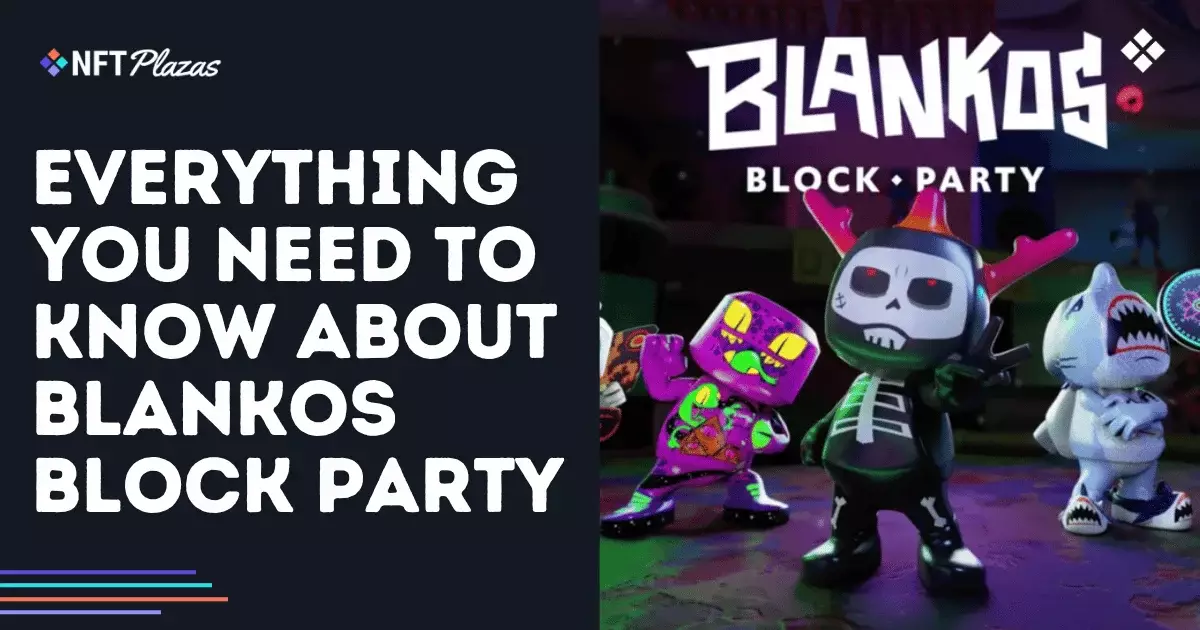In the ever-evolving landscape of gaming, few ventures have dared to challenge the status quo as audaciously as Blankos Block Party. Launched amidst a frenzy of blockchain enthusiasm, this colorful multiplayer game positioned itself as a pioneer in integrating “playable NFTs” within an accessible gaming environment. While its bold ambitions garnered attention and a dedicated community, the journey reveals a sobering reality: the integration of blockchain into core gaming experiences remains fraught with challenges that threaten to undermine innovation with impracticality and performative hype.
Initially, Mythical Games crafted Blankos with the noble intent of democratizing digital ownership and empowering players through creative and financial stakes. Developers worked tirelessly to merge game design with blockchain technology, creating an ecosystem where players could buy, sell, and create custom digital assets—an enticing prospect for those weary of traditional digital economies. Yet, despite the lofty promises, the actual engagement with blockchain features was surprisingly minimal. Over 85% of transactions relied solely on fiat currency, revealing that most players prioritized familiar economic models over crypto speculation. This disconnect underscores a fundamental flaw: the industry’s attempt to embed complex blockchain technology into casual gaming did not resonate with mainstream audiences.
Furthermore, the game’s transition from PC to mobile exemplifies a deeper strategic failing. Mythical’s decision to shift focus was driven by the high costs associated with expanding into PC markets—an expensive terrain for acquiring new players unfamiliar or uninterested in blockchain. Mobile, conversely, presented an appealing avenue, but it also meant diluting the game’s core identity. The PC version’s shutdown symbolizes how the gamble on blockchain-powered multiplayer experiences underestimated the difficulty of convincing traditional gamers to accept digital assets that require external crypto wallets or blockchain literacy. The move was ostensibly pragmatic, but it signaled the fragility of the entire enterprise: a technology-centered experiment that failed to gain critical mass, in part because it underestimated the importance of seamless, user-friendly experiences.
The technological shift to Polkadot further exemplifies the game’s attempts to adapt, emphasizing faster and cheaper transactions alongside interoperability. Yet, these improvements are incremental and do not address the underlying skepticism players harbor about the environmental sustainability, security, and value proposition of blockchain gaming. The reality is that most gamers view NFTs not as genuine assets, but as ostentatious status symbols, often associated with speculation and environmental concerns. This hampers the long-term viability of such initiatives—if players don’t buy into the fundamental premise, no amount of technical improvement can salvage their credibility.
The Illusion of Innovation: What Blankos Actually Taught Us
Blankos was lauded as a pioneer, but much of its legacy is shadowed by unfulfilled potential and misaligned industry expectations. The game’s emphasis on user-generated content, branded collaborations, and resale royalties showcased how blockchain could resonate with creators and fans alike, but these features were often overshadowed by broader challenges. The notion that “playable NFTs” would revolutionize gaming was overly optimistic, if not naive. The technology’s complexity, coupled with consumer wariness, meant that the vast majority of players experienced it as an unnecessary complication rather than an enhancement.
Contrary to some claims, Blockchain’s inclusion in Blankos was more superficial than transformative. Money-changing hands in fiat currency far exceeded blockchain transactions, suggesting that integrating NFTs primarily served marketing or speculative purposes rather than groundbreaking gameplay. Limited-edition collaborations with brands like Burberry or Deadmau5 were, in essence, marketing stunts that failed to translate into sustained community engagement. They did little to clarify the value of NFTs; instead, they reinforced the perception of NFTs as superficial digital swag—collectibles that are more about bragging rights than genuine utility.
Moreover, the game’s most innovative feature, the in-game marketplace, did little to overcome inherent skepticism. Selling NFTs involved a custodial wallet designed for ease but also raised concerns about asset security and ownership legitimacy. The resale royalties model attempted to legitimize ongoing creator revenue, yet it couldn’t overcome the consumer reluctance to fully embrace ownership of digital assets that hinge on fluctuating blockchain standards. The social aspect — a core element of any successful multiplayer — was often hamstrung by the technological hurdles and the game’s limited appeal beyond early adopters.
What Does This Mean for the Future of Blockchain Gaming?
Blankos’ trajectory reveals a sobering truth: blockchain integration in mainstream gaming is still in its infancy. While the early enthusiasm painted a rosy picture of a future where players are true owners of their digital assets, reality proves otherwise. The technical hurdles, economic inefficiencies, and cultural resistance create an environment where blockchain-driven features often feel secondary or optional at best.
The pivot to mobile is arguably a sensible recalibration, but it also highlights how unprepared the industry is for mass adoption. Blockchains need to deliver tangible benefits—speed, low fees, security—that resonate beyond niche markets. If Mythical’s gamble on Polkadot and mobile proves successful, it might ignite a new wave of web3 gaming; however, history warns us of overestimating the readiness of mainstream consumers for such radical innovations.
Ultimately, Blankos’ story is a cautionary tale—a reminder that genuine gaming innovation must prioritize simplicity, community, and seamless experiences over technological novelty. Blockchain’s true potential lies not in gimmicky collectibles or speculative hype, but in empowering players with genuine ownership and creative agency. Until the industry aligns these ideals with practical, user-friendly solutions, efforts like Blankos will remain admirable experiments—important, but ultimately incomplete experiments—in the ongoing evolution of interactive entertainment.

